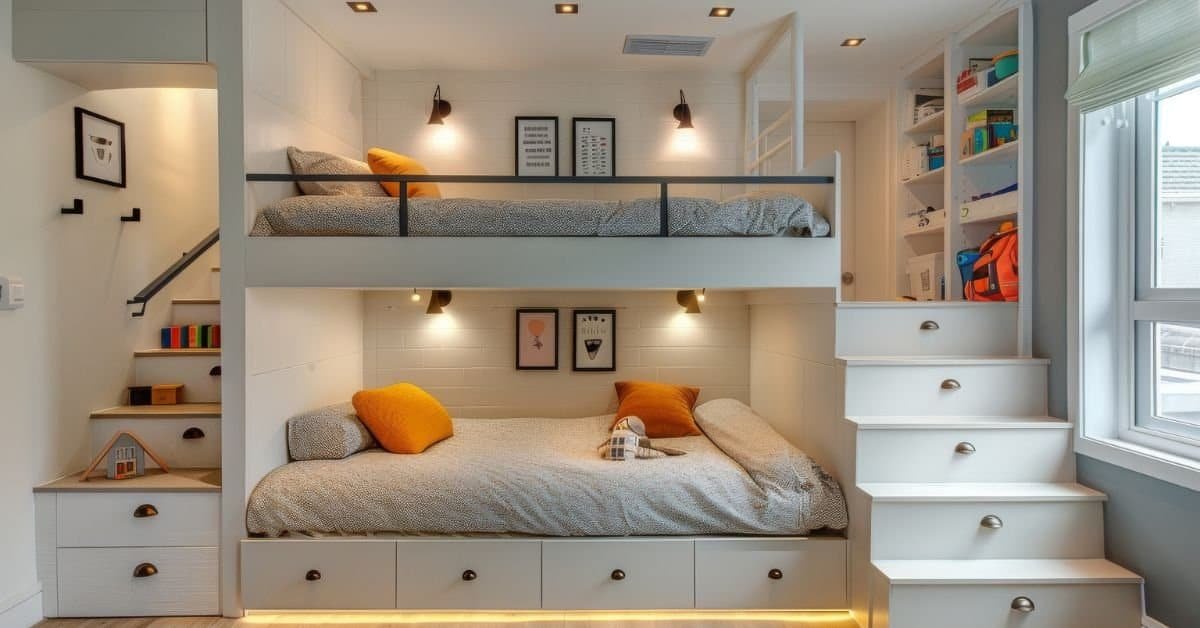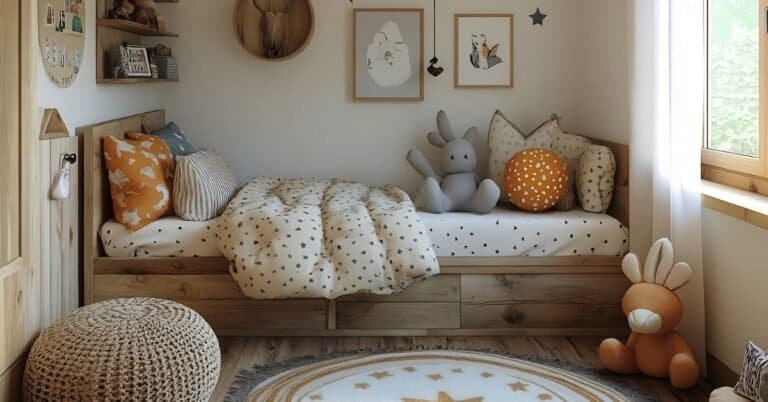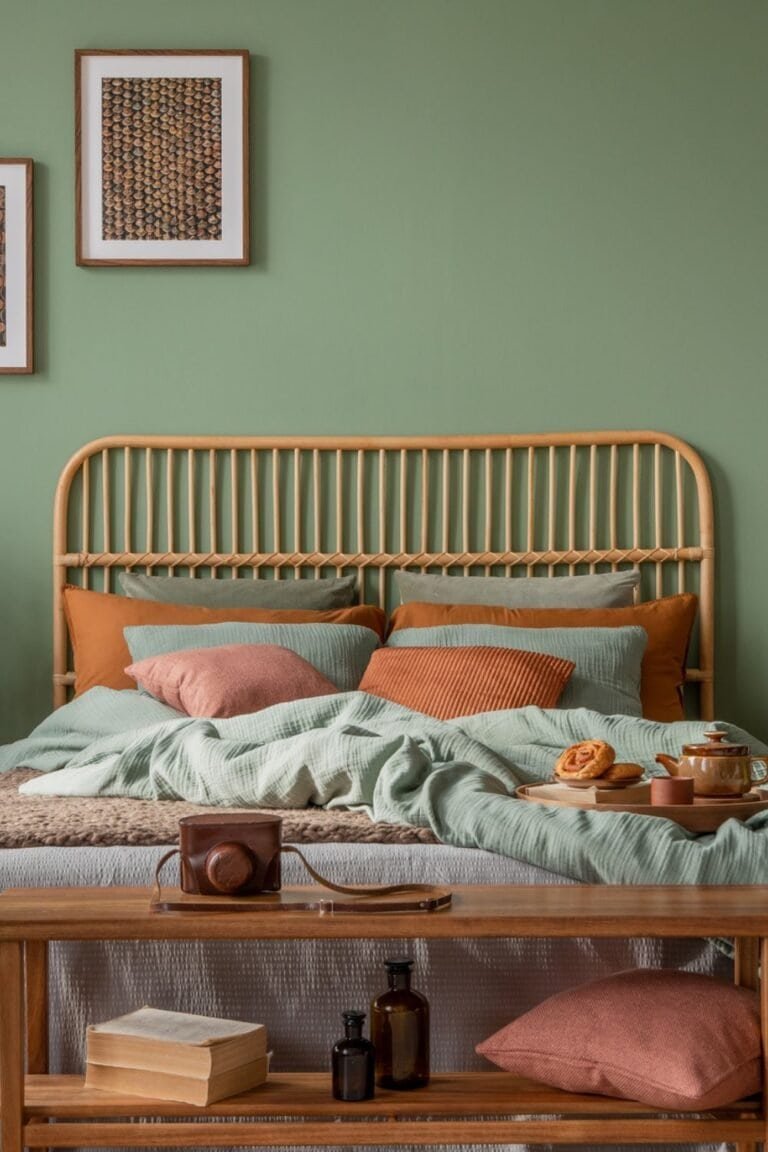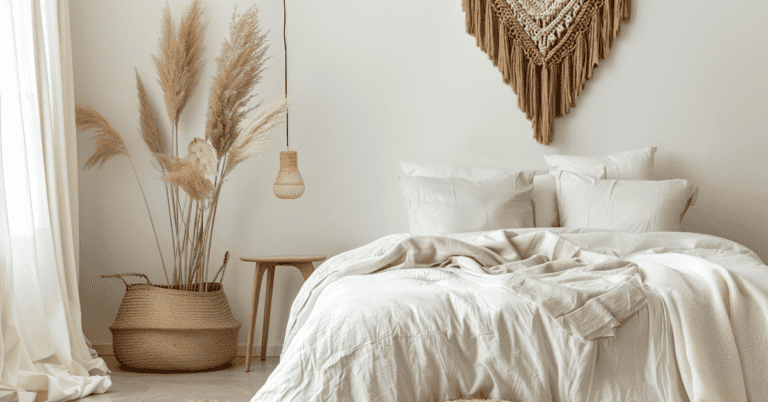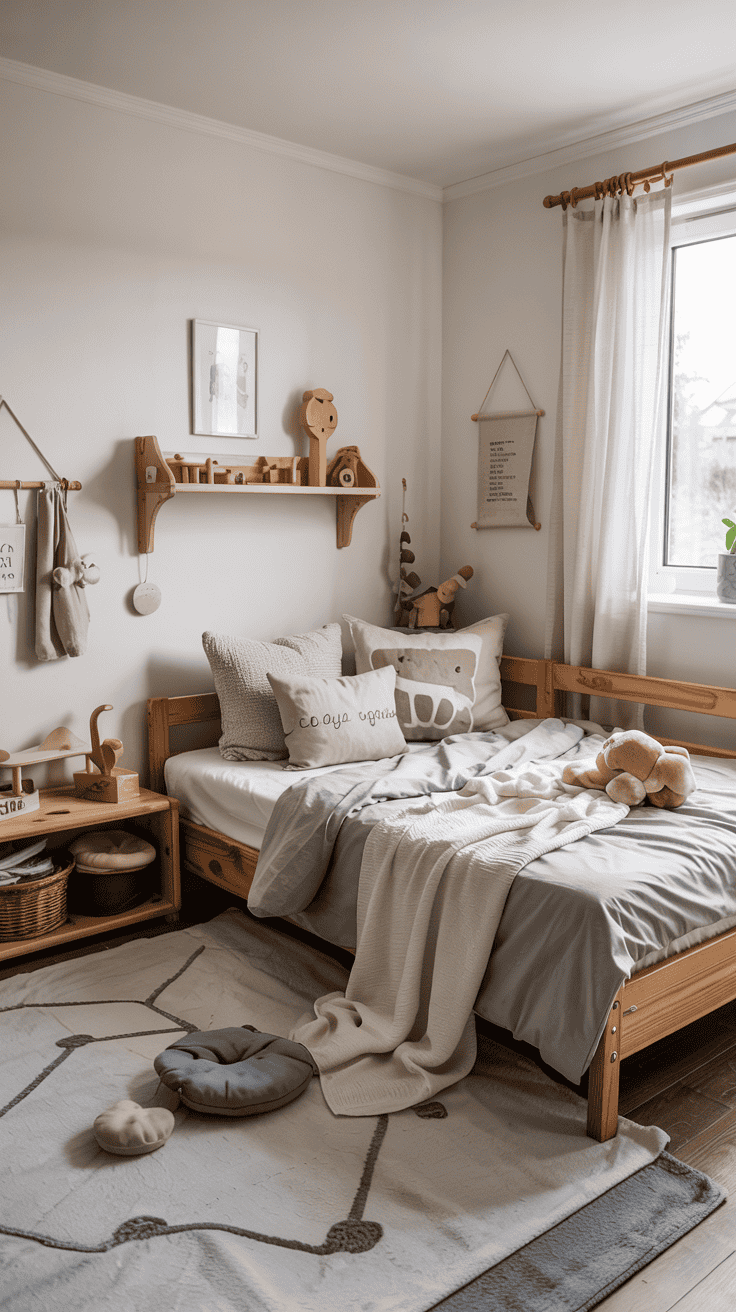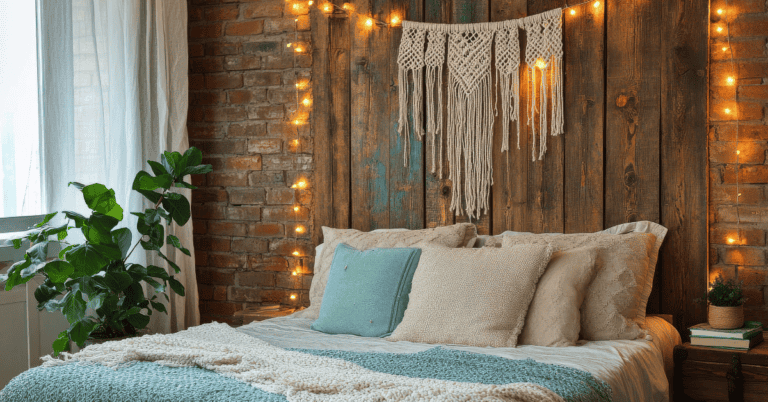This post shows 10 Innovative Kids Bedroom Designs That Inspire Creativity!
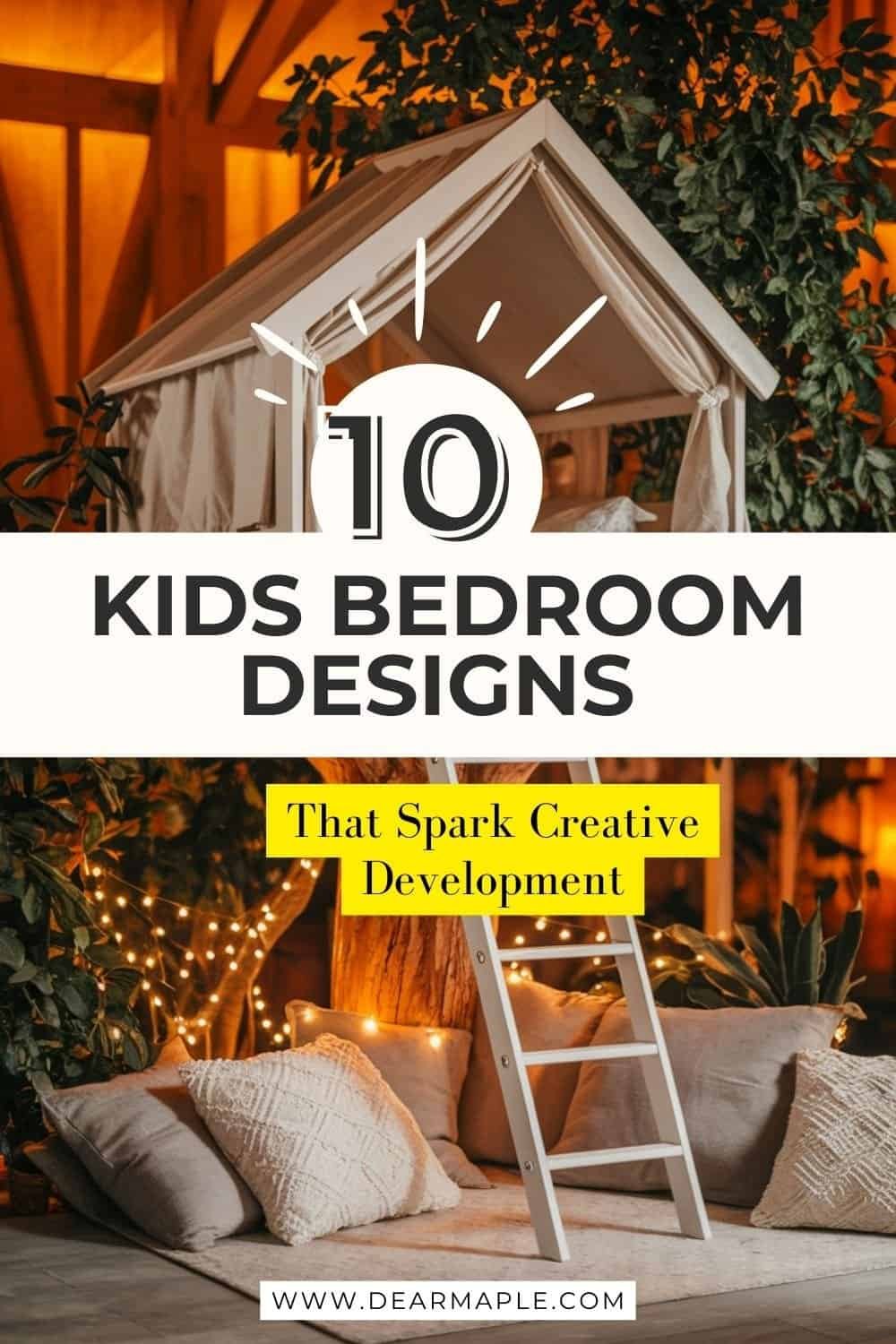
Hey there, fellow home design enthusiast! Remember when kids’ bedrooms were just a bed, dresser, and maybe some cartoon character wallpaper if you were lucky? Those days are long gone! Today’s children’s spaces are becoming innovation hubs that nurture imagination and growth. But creating these magical spaces doesn’t require an interior design degree or bottomless budget—just some creative thinking and understanding what makes your little one tick.
Ever wondered how to transform that plain room into something that’ll make your kid rush to show their friends? Well, you’re in the right place! I’ve spent years obsessing over children’s spaces (in a totally non-creepy way, I promise!), and I’m thrilled to share some truly game-changing designs that’ll spark creativity in even the most iPad-addicted youngsters.
10 Innovative Kids Bedroom Designs That Inspire Creativity
1. The Indoor Treehouse Retreat

Who says treehouses belong outside only? Indoor treehouse beds or reading nooks have become one of my absolute favorite trends in kids’ bedroom design.
I recently helped my sister create one for my 7-year-old nephew, and the look on his face when he saw it was priceless. We built a simple wooden frame that resembled a treehouse, complete with a small ladder and roof. Underneath became a cozy reading nook with floor cushions and string lights.
The beauty of indoor treehouses is their versatility:
- They can be elaborate built-ins or simple canopy-style structures
- They work for various age groups (with appropriate safety features)
- They create natural zones in the room for different activities
The key to success is making it feel like a secret hideaway. Add curtains that can be drawn for privacy, battery-operated fairy lights, and perhaps a small bookshelf within reach. Your child will have their own little world within their bedroom—perfect for reading, imagining, or just having some quiet time.
Ever notice how kids at parks always gravitate toward playhouses and climbing structures? This design brings that magnetic appeal right into their daily environment.
2. Interactive Wall Features
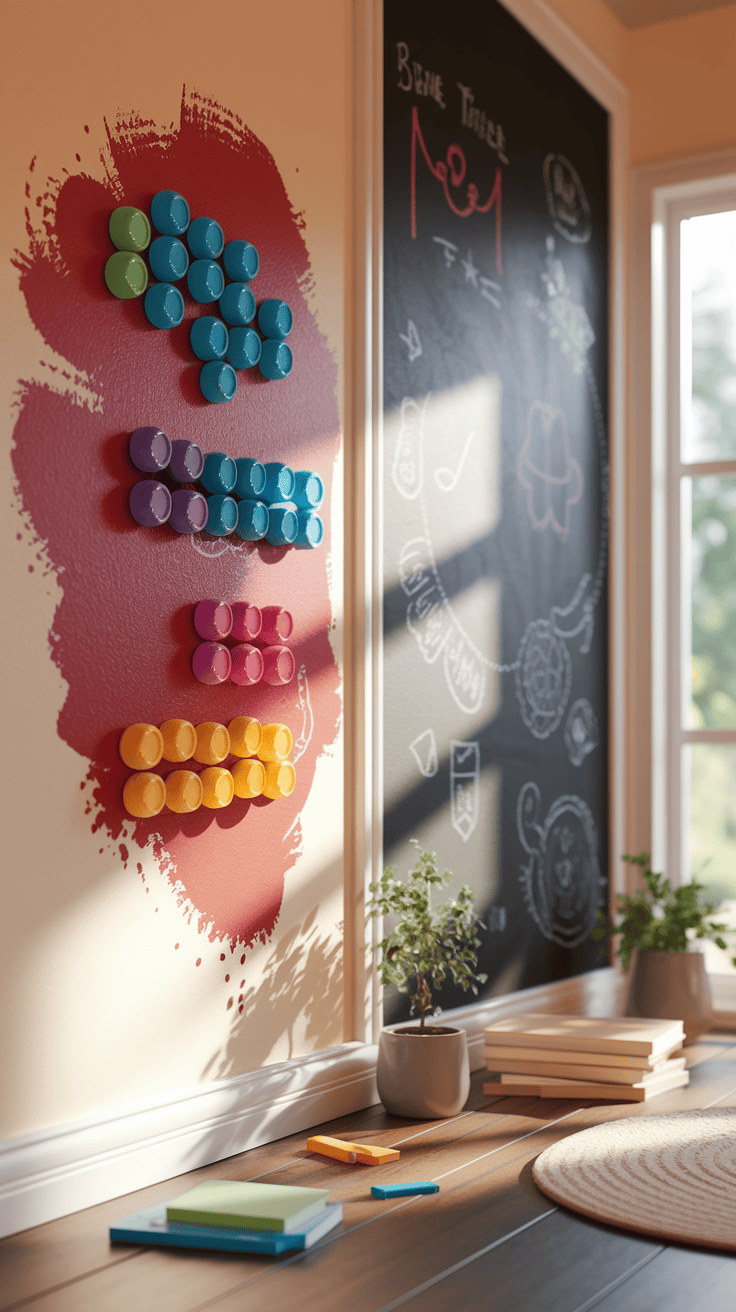
Walls don’t have to be boring flat surfaces covered in posters! One of the most innovative trends I’ve fallen in love with is interactive wall features that transform ordinary walls into play spaces.
Some brilliant options include:
Magnetic Paint Sections
This has been a game-changer in my friend’s house. Her daughter’s math skills improved dramatically after they painted one wall with magnetic paint and added colorful number magnets. You can create designated areas for:
- Magnetic building toys
- Letter magnets for word creation
- Interchangeable art displays
- Science models and diagrams
Chalkboard or Dry-Erase Surfaces
I painted a chalkboard wall in my son’s room three years ago, and it’s still his favorite feature. It’s constantly evolving with his interests—one week it’s dinosaur drawings, the next it’s rocket ships, and sometimes it’s just a massive scoreboard for made-up games.
Modular Climbing Walls
Yes, you read that right! Smaller climbing holds can be installed on a reinforced wall section to create an indoor climbing feature. I’ve seen these in various scales—from just a few feet off the ground for younger kids to impressive setups for teens.
The beauty of interactive walls is they grow with your child. The same magnetic wall that displayed ABC magnets for your toddler can later hold complex science diagrams for your middle-schooler.
3. Sensory-Rich Secret Spaces
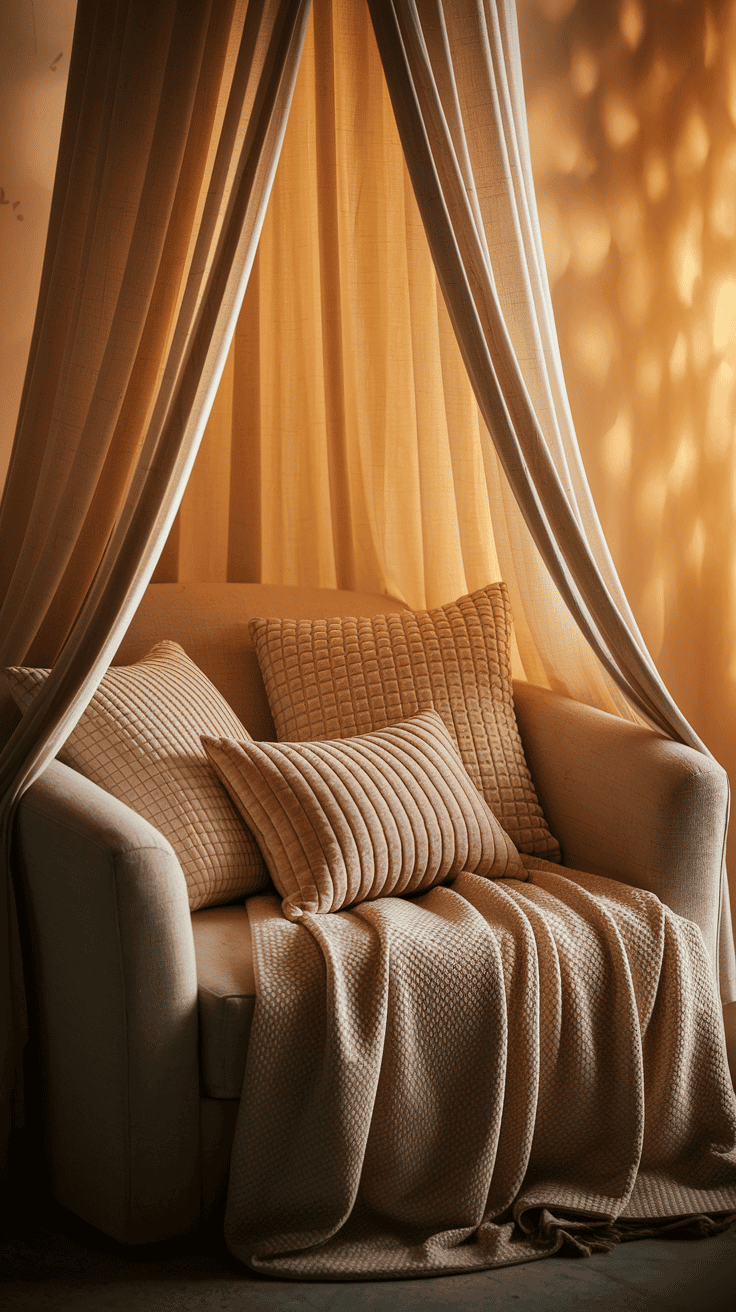
Kids need hideaways—spaces that feel exclusively theirs where they can process feelings, daydream, or just escape the constant supervision of adulting.
When designing my niece’s room last year, we created what she calls her “feeling corner”—a canopied nook with different textured pillows, a weighted blanket, color-changing lights, and a small Bluetooth speaker for music or nature sounds. It’s where she goes when she’s overwhelmed, excited, or just needs some space.
These sensory retreats can include:
- Various fabric textures and weighted items
- Gentle lighting options (color-changing LEDs are a hit!)
- Sound machines or speakers
- Fidget toys or stress relievers
- Visually calming elements like bubble tubes or glitter jars
What makes these spaces magical is their ability to help children self-regulate and understand their senses. In a world where kids are bombarded with stimulation, having a dedicated space to center themselves is incredibly valuable.
FYI, these sensory corners don’t require much space—even a converted closet or corner with a canopy can work wonders!
4. Ceiling-to-Floor Creativity Zones

Why settle for a small desk when you can create an entire zone dedicated to creative pursuits? One of the most inspiring rooms I’ve ever seen belonged to a budding 9-year-old artist whose parents transformed an entire wall of her room into a creativity station.
The setup included:
- Floor-to-ceiling whiteboard paint
- Adjustable shelving for supplies
- A pull-down table that could be tucked away when not in use
- Track lighting specifically positioned for optimal creating conditions
- Display rails for showcasing finished masterpieces
What I love about dedicated creativity zones is how they validate a child’s interests. By allocating significant space to creative pursuits, you’re telling your child that their creative expression matters.
Have you noticed how differently kids behave in spaces specifically designed for creation compared to when they’re trying to work at the kitchen table? The psychological impact of having a dedicated space is huge.
5. Transformable Furniture Systems

Let’s talk about the unsung heroes of innovative kids’ rooms—smart furniture systems that can transform as quickly as kids’ interests do!
I recently invested in a modular furniture system for my son’s room, and it’s been worth every penny. The bed platform can be configured as a standard bed, a loft with a desk underneath, or two separate twin beds when friends sleep over. This kind of adaptability is perfect for:
- Small spaces that need to serve multiple functions
- Playdate hosting
- Evolving needs as children grow
- Siblings who may need to share space temporarily
Modular systems aren’t just practical—they’re empowering. When my son decides he wants to rearrange his room (which happens approximately every other month, I swear!), he can actually do it himself safely, giving him ownership over his environment.
The furniture you choose sends a message—static, heavy, unmovable pieces say “this is permanent” while transformable systems say “change is welcome here.” Which message do you want your child’s space to convey? 🙂
6. Immersive Themed Environments
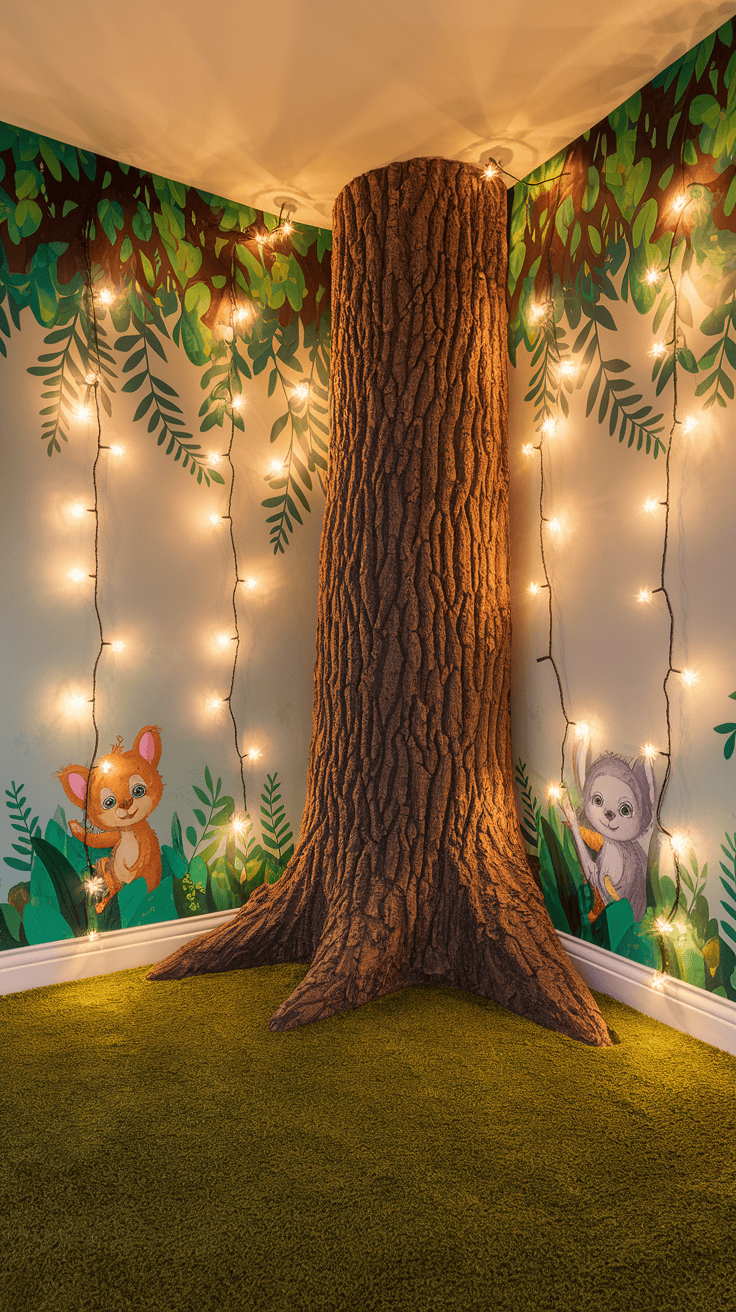
Themed rooms have evolved way beyond slapping some superhero bedding on a standard bed. Today’s immersive themed environments use multiple design elements to create truly transportive spaces.
The best themed rooms I’ve encountered don’t just decorate with a theme—they create an experience through:
- Strategic lighting (star projectors for space themes, dappled lighting for forest themes)
- Textural elements (sandy textures for beach themes, leafy canopies for jungle themes)
- Interactive components (steering wheels for vehicle themes, periscopes for submarine themes)
- Multi-sensory details (gentle ocean sounds for nautical themes, etc.)
My cousin created an underwater-themed room for her daughter, complete with an ombré blue wall treatment that darkened toward the ceiling, suspended jellyfish light fixtures, and a bed canopy that resembled waves. The room itself became a prop for imaginative play.
What makes themed rooms work is commitment to the concept while keeping fundamental elements—like the bed and storage—somewhat neutral so they can evolve as interests change. Because let’s be real, that passionate dinosaur enthusiast might suddenly become obsessed with outer space next month!
7. Tech-Integration Done Right
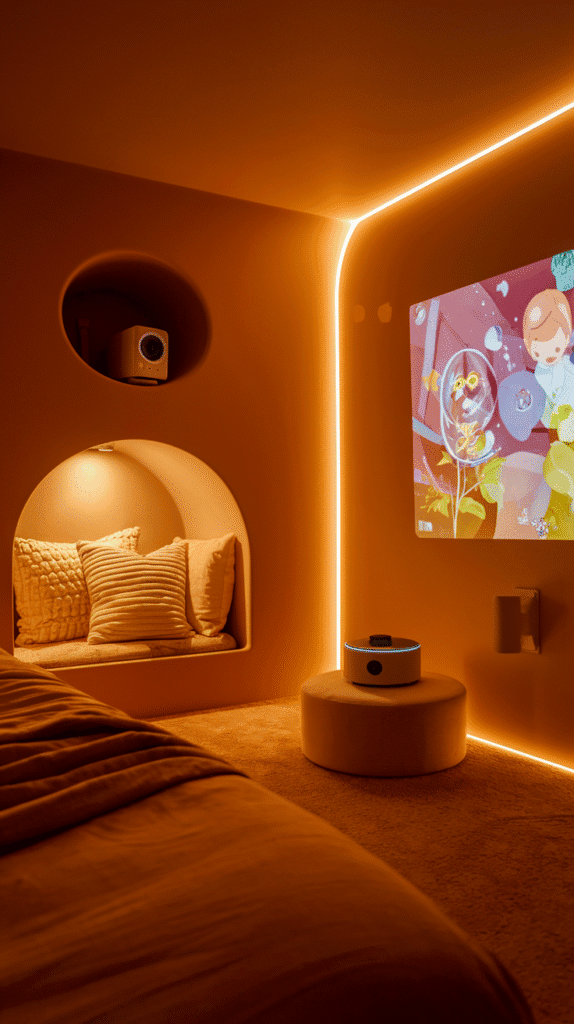
Kids’ rooms and technology have a complicated relationship. We want to encourage digital literacy without creating screen-addicted zombies, right? The innovative rooms I’m seeing lately integrate tech thoughtfully rather than making it the centerpiece.
Some smart tech integrations include:
- Projection systems for storytime that display book illustrations on the ceiling or wall
- Audio systems designed for kids’ independence (like modified record players or simplified digital music stations)
- Light programming that children can control (teaching cause and effect)
- Smart storage systems that use tech to encourage organization
I recently set up a simple projection system in my daughter’s room that displays constellations on her ceiling. We use it as part of our bedtime routine, identifying different star patterns before sleep. It’s tech that enhances connection rather than replacing it.
The rule I follow is that technology should enable creativity, not just consumption. Any tech element should prompt action, imagination, learning, or creation—not passive staring.
8. Biophilic Design Elements
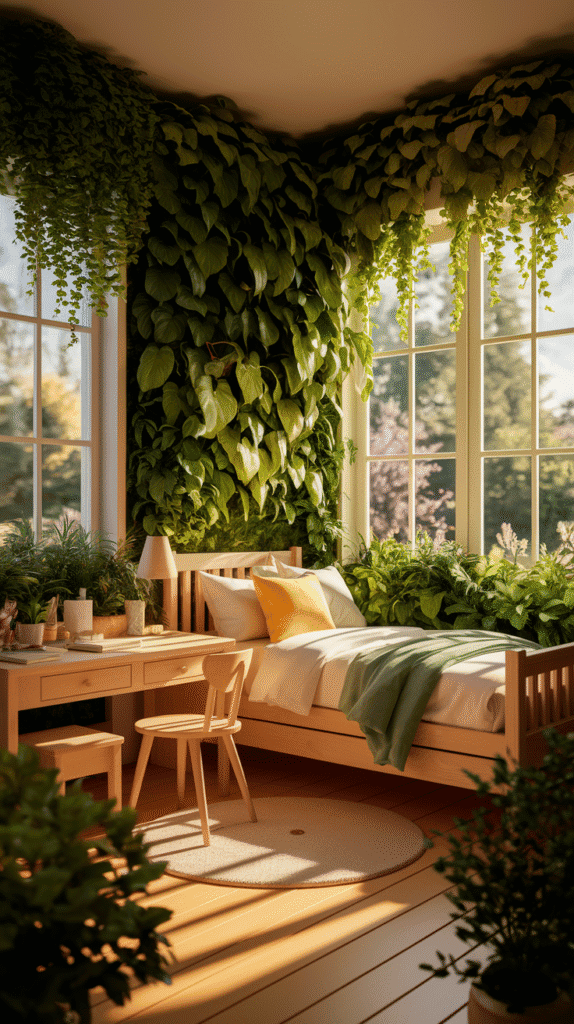
Connecting kids with nature has never been more important, especially as outdoor free play time decreases for many children. Biophilic design—incorporating natural elements and patterns—is showing up in the most forward-thinking kids’ spaces.
My absolute favorite implementation was in a room I helped design for a 10-year-old who couldn’t have pets due to allergies. We created a dedicated plant wall with safe, hardy species that he could care for independently. It became his passion project, teaching responsibility while bringing natural elements indoors.
Biophilic elements worth considering:
- Living walls or dedicated plant areas with child-safe species
- Natural materials like wood, stone, and cotton
- Nature-inspired color palettes
- Water features (small, safe tabletop fountains)
- Natural light maximization
Ever noticed how much calmer kids seem after spending time outdoors? Biophilic design attempts to bring that same regulatory effect indoors, potentially helping with focus, calm, and even sleep quality.
9. Vertical Space Utilization
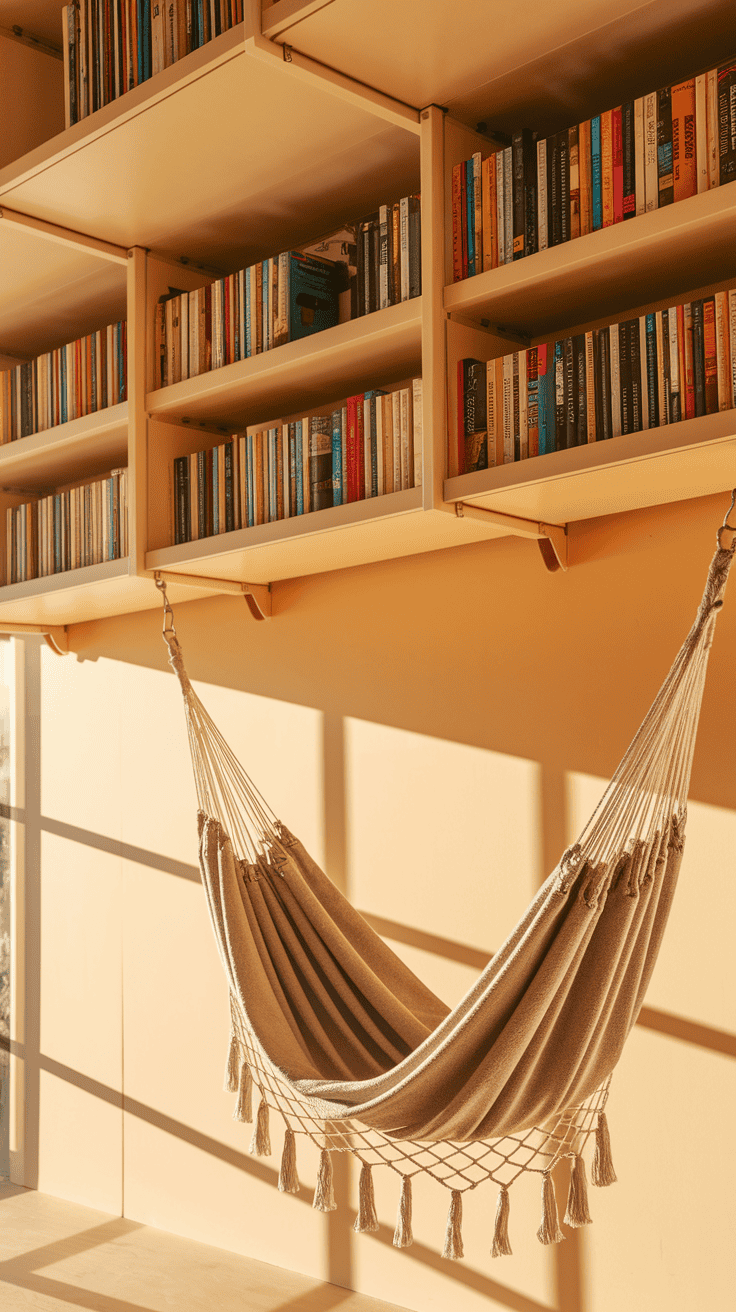
Most traditional bedrooms criminally underuse vertical space, but innovative kids’ room designs are looking up—literally!
I’m currently obsessed with rooms that fully engage the ceiling and upper wall space for both function and whimsy. In a small apartment bedroom I recently redesigned, we installed:
- A pulley system that allowed the child to display artwork by sending it up to the ceiling
- Suspended reading hammocks that could be lowered or raised
- Hanging storage solutions that freed up floor space
- A constellation of hand-made paper lanterns at varying heights
The psychological effects of using vertical space are fascinating. Children develop spatial awareness and gain a different perspective on their environment. Plus, there’s something magical about looking up and seeing something unexpected—it maintains wonder in everyday spaces.
IMO, vertical design is the most overlooked opportunity in most rooms. We’re conditioned to design at adult or kid eye level, but true creativity happens when we break out of those constraints!
10. Stage and Performance Spaces
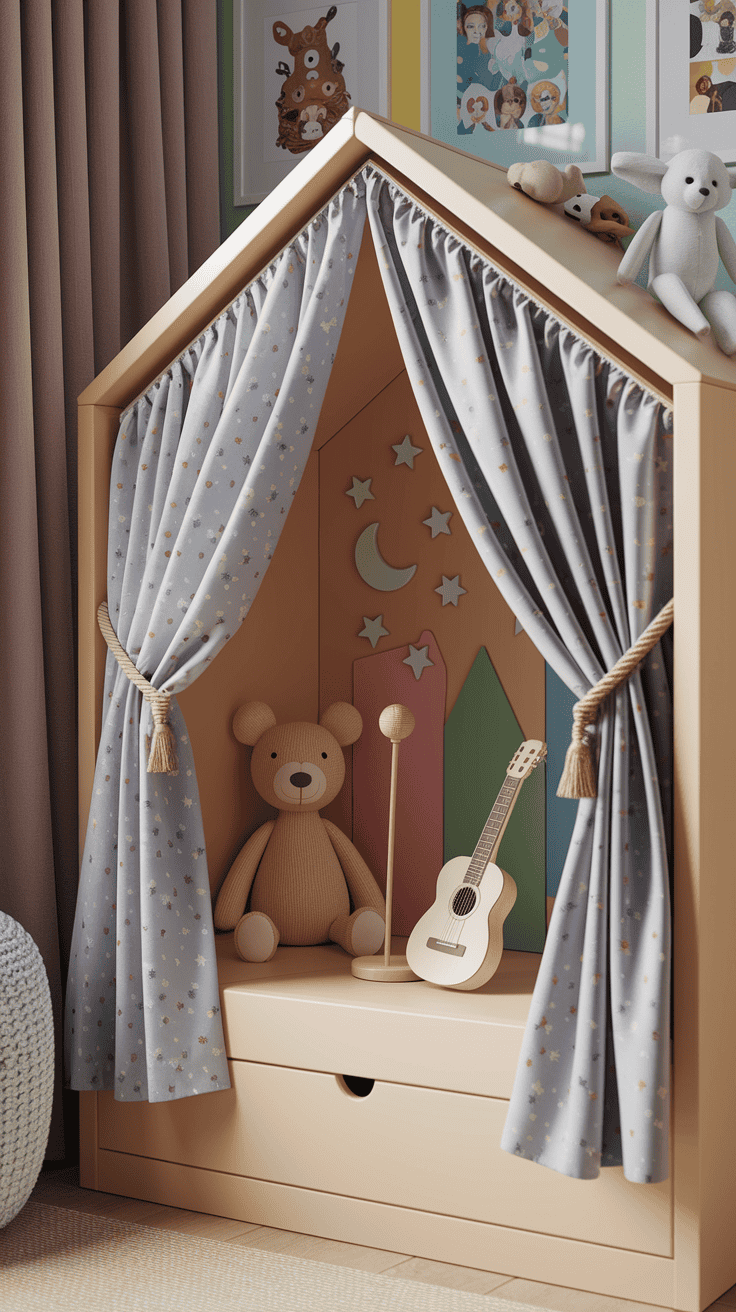
The TikTok generation has a relationship with performance that previous generations didn’t, and innovative kids’ rooms are acknowledging this through dedicated performance spaces.
These don’t have to be elaborate—a simple platform with a curtain can transform into countless imaginative scenarios. My nephew has a 3′ x 4′ raised platform in his room with a tension rod and curtain above it. It’s been:
- A stage for magic shows
- A puppet theater
- A pretend cooking show set
- A “YouTube studio” (minus actual uploading)
- A spaceship cockpit
What makes these spaces special is their open-ended nature. Unlike many toys that dictate play, a simple stage offers infinite possibilities guided by imagination.
The most successful performance spaces include:
- Simple, movable backdrop options
- Basic lighting (even just a clip lamp with a colored bulb)
- Storage for props and costumes
- A designated audience area
In today’s world where kids are increasingly aware of media creation, these spaces allow them to explore storytelling and presentation skills through play—pretty valuable skills for their future, wouldn’t you say?
Bringing It All Together
The most successful kids’ rooms don’t just incorporate a single innovative element—they thoughtfully layer several ideas in a cohesive way that reflects the specific child who lives there.
Remember that the best room is one that your child feels ownership of. Involve them in the design process, observe what truly engages them (not just what they say they want), and create spaces that can evolve as they do.
The goal isn’t a picture-perfect Instagram room—it’s a functional, inspiring environment that supports your child’s development and sparks their imagination. Sometimes that looks messy and chaotic to adult eyes, but if it’s serving your child’s creativity, it’s doing exactly what it should.
What innovative element would your child love most? Whatever you choose, the simple act of thoughtfully designing their space sends a powerful message—that their ideas, interests, and development matter. And isn’t that the most creative-inspiring concept of all?
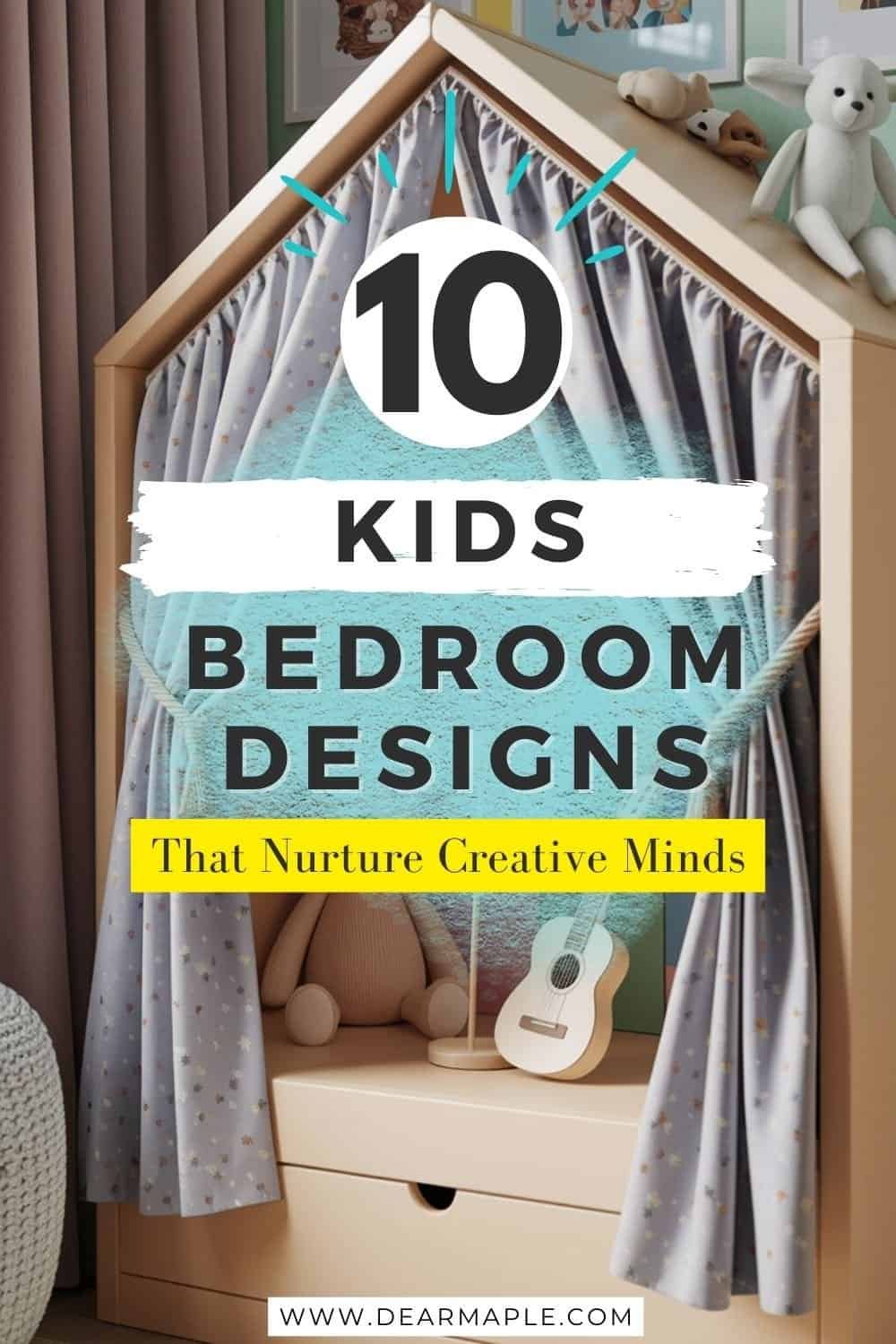
This post shows 10 Innovative Kids Bedroom Designs That Inspire Creativity!

